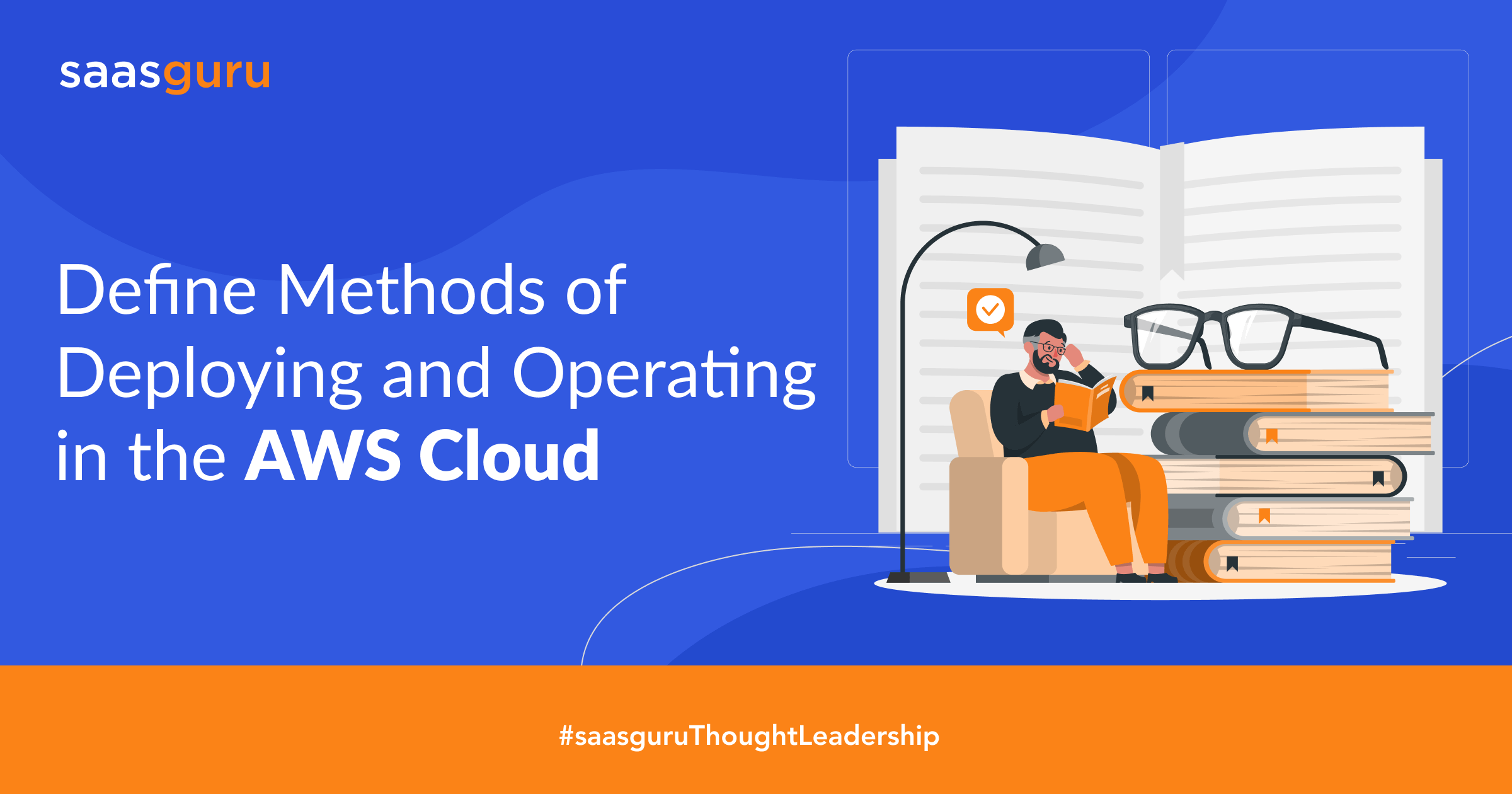The AWS platform provides various options for customizing your applications and IT infrastructure deployment. Selecting the correct deployment methods in the AWS Cloud can be challenging if you are unfamiliar with the best options available. In this guide, we shall explore the best methods of deploying and operating in the AWS cloud.
The deployment method differs from customer to customer depending on whether it is a three-tier application or a complicated set of workloads. But with the correct way, the AWS platform can provide you with the best tool and strategy to deploy the infrastructure to manage the workload.
To see what types of questions will be asked on this topic, read the top 30 AWS Certified Cloud Practitioner Exam Questions.
Before learning the various deployment methods in AWS, let us explore the cloud computing deployment models to see how the deployment works.
Cloud Computing Deployment Methods
1. Cloud
The cloud deployment model deals with deploying applications running entirely in the cloud. It is possible in two ways. They are either created in the cloud or are transferred to the cloud from the current infrastructure.
2. Hybrid
The hybrid cloud deployment model deals with creating applications and infrastructure connectivity between legacy resources and cloud-based resources located on-premise. The hybrid deployment model is used to widen the overall set-up into the cloud. It also allows the organization to integrate in-house core infrastructure and cloud resources.
3. On-Premise
This deployment model provides maximum resource utilization to organizations by using multiple resource management tools and visualization. It connects the cloud resources and on-premise infrastructure.
Theoretical knowledge is essential, but it is equally crucial to learn the skills necessary to become an AWS certified cloud practitioner.
Click here for the ultimate AWS certified cloud practitioner study guide – explore the updated AWS CCP syllabus, exam pattern, exam fee, registration & preparation tips.
We shall now learn the various methods for deployment of your applications and customizing your IT infrastructure is as follows:-
Methods of Deployment and Operating in the AWS Cloud
1. AWS Elastic Beanstalk
With the help of AWS Elastic Beanstalk, you can get an app from your desktop in just a few minutes. On deploying your app, Elastic Beanstalk provides a set of AWS resources, including alarm, Amazon EC2 Instances, Security groups, a load balancer, etc. It manages the information related to load balancing, application health provisioning, capacity provisioning, and scaling.
2. AWS Cloud Formation
AWS Cloud Formation helps you set up and model your AWS resources such that you don’t spend much time handling those resources and get more time to focus on your application running in the AWS. You can design a template that has all the AWS resources you want, and the AWS cloud formation will deal with the configuration and management of those resources for you.
3. AWS OpsWorks
This method manages the configuration of services by using Chef in a cloud enterprise.
The AWS OpsWorks Stalk gives a flexible and easy way to handle and create stacks and applications. It also allows you to monitor and deploy applications in your stacks. It does not need Chef servers and performs the tasks of stack servers for you. The AWS OpsWorks Stalk uses Auto Scaling and Auto Healing to monitor instance health.
The AWS OpsWorks for Chef Automate allows you to create AWS-managed chef servers. It uses Chef tooling like Chef DK to manage the server.
4. AWS CodeCommit
It allows the organizations to provide private Git repositories that are secure and highly scalable. It connects AWS CodeDepoly and AWS CodePipeline to manage your release process and development.
5. AWS CodePipeline
It is a continuous delivery and continuous integration service for reliable and speedy infrastructure and application upgrades. The AWS CodePipeline builds, deploys, and tests your code every time you change the code, depending on the release process model.
6. AWS CodeDeploy
AWS CodeDeploy is a service that automatically deploys the software and the code to any instances running on-premises, including Amazon EC2 instances. It allows you to rapidly and effectively deploy new features and manages the process of updating your application.
7. Amazon Elastic Container Service
The Amazon Elastic Container Service is a high-performance, highly scalable service that provides Docker containers and allows you to run your applications easily on Amazon EC2 instances. It avoids the requirement of installing, scaling, and operating your own cluster management infrastructure.
Each model and method serves the requirements of a particular type of user. And it may be overwhelming for you to choose any one model. So, learn which method is best suitable for your deployment process:-
1. AWS Cloud Formation is best suited if the organization is extensive with various and diverse infrastructure requirements. But it is not a good option for small companies and startups.
2. AWS Beanstalk is a good choice for large companies and startups because it is cost-effective and allows you to pay only for the underlying infrastructure.
3. Large organizations and small startups can also use AWS CodeDeploy because it has a significant ability to scale. But it cannot be connected to your build process. You would be able to either connect it with Github URL or a static S3 artifact.
4. If the organization or the startup has no DevOps knowledge, it must use AWS ECS. Because it does not require expert operational expertise, and it is easy to deploy.
To Sum Up
It depends on the size and needs of the organization to decide which deployment method fits their requirements. The guide elaborates on a thorough comparison of the various deployment and operating models in the AWS cloud to help you select the best model for your organization.
As organizations are shifting towards cloud computing, there is a rapid demand for experienced professionals. saasguru gives you a chance to upgrade yourself with our AWS CCP course and excel in the world of Amazon.
Check out the AWS certification courses offered by saasguru.










